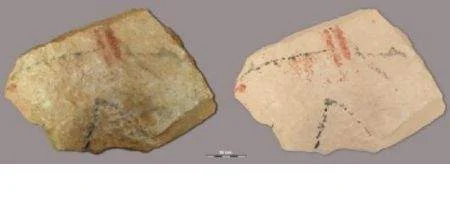Anthropologists have discovered the world’s earliest example of wall art, dating back 37,000 years.

The 1.5 metric ton block of engraved limestone was found at Abri Blanchard in southern France, a site which has already yielded many personal ornaments, such as pierced animal teeth and shells, ivory and soapstone beads, engravings and paintings on limestone slabs.
“Early Aurignacian humans functioned, more or less, like humans today,” says New York University anthropology professor Randall White. “They had relatively complex social identities communicated through personal ornamentation, and they practiced sculpture and graphic arts.”
The engraved block was discovered in 2007 in what had been a rock shelter occupied by a group of Aurignacian reindeer hunters. It formed a ceiling about six feet above the original floor. Its age was established using carbon dating.
The ceiling includes depictions of animals and geometric forms – as well as female genitalia – which are less sophisticated than the famous, more recent paintings from Grotte Chauvet.
“This art appears to be slightly older than the famous paintings from the Grotte Chauvet in southeastern France,” says White.
“But unlike the Chauvet paintings and engravings, which are deep underground and away from living areas, the engravings and paintings at Castanet are directly associated with everyday life, given their proximity to tools, fireplaces, bone and antler tool production, and ornament workshops.”






